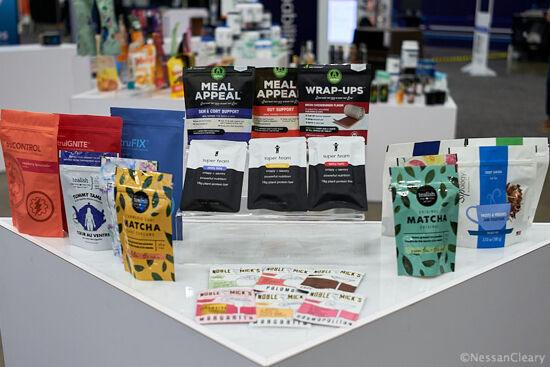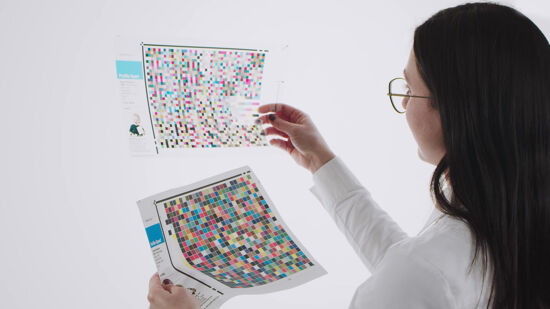How to have full control over colour management to deliver better images and low ink costs

Nessan Cleary shares the important factors that contribute to good colour management which includes having efficient process control and the importance of ensuring all staff follow good working practices.
In theory, roses should be red and violets blue, but of course when it comes to printing, getting the exact shade and hues right depends on how accurate your colour management is. All too often people are nervous about colour management, which still has a reputation for being a skill that’s more difficult to master than flying a jumbo jet.
However good colour management is really more about having good process control. Colour was one of the first parts of the printer production workflow to be fully professionalised. In the past, printing was often seen as a craft industry, where experienced operators judged the output coming off the presses by eyesight alone, making corrections on the fly. A modern workflow is based around print as a manufacturing industry, where machine data is collected and analysed, the colours are measured and the output is produced to known standards. In this context, colour management is just part of the process of running a press.
However, most of the standards have been developed for offset litho printing rather than wide format inkjet, such as ISO 12647. Since many wide format printers can reproduce a much wider colour gamut, the temptation is to ignore these standards. But such standards provide a known benchmark that printer operators can work to, and that customers can use when signing off for jobs. Besides, many customers may have a range of print jobs, such as retail brands who want to match inkjet-printed display graphics to flexo-printed packaging and so on.
Why bother with colour management?
Many small print shops may conclude that they don’t have many international brands amongst their customers and that it’s better to give each job their individual attention, even down to adjusting the colours for better saturation. But this ignores the main advantage of colour management, which is to be sure that you can reproduce the expected colours consistently. This means that, if needed, you can reprint part of a job without having the cost of replacing the whole job. More importantly, it also means that you won’t end up arguing over colour with a customer who has signed off a proof and expected the colours of the final job to match.
Good colour management is also a major part of automating the prepress so that you can push jobs through the production workflow as quickly as possible. The alternative, spending more time on each job, will limit any chance of increasing sales and revenues.
An additional bonus is that you can also provide guidelines to customers on how to set up their files for your workflow, minimising any time that has to be spent correcting customer files. And of course, anything that leads to asmoother customer experience, should also help a print shop maintain its reputation.
Profiles
The key to any colour management system is to profile each device so as to be sure of its particular characteristics. This should include monitors as well so that the operators can be sure that the colours they see on screen match those coming off the printers. Ideally, those screens should be fitted with hoods to limit the risk of extraneous light affecting the appearance of the colours shown. Every printing machine will also require its own profile, and these profiles will also cover both the ink and substrate as well as the machine itself. This means that you will need separate profiles for each substrate used with any given printer.
Most manufacturers will supply profiles for their own equipment and these profiles may well be good enough for a lot of jobs. But it is far better to make your own profiles, as these will be specific to your working conditions, including temperature and humidity, which can affect the colour output of some inkjet devices. You should also update profiles over time to ensure that they are still accurate as calibrations will drift, particularly as printheads are replaced.
The process of making the profiles can be a bit tedious as it involves printing out a test chart and then measuring a number of colour patches. You will need a spectrophotometer to do this and it’s definitely worth paying for an automated solution that can measure the whole test chart in one go. It follows that you should send the spectrophotometer back to the manufacturer every year or so to ensure that it is also calibrated.
 CAPTION: The Barbieri LFP qb spectrophotometer has a removable measuring head and takes M1 measurements
CAPTION: The Barbieri LFP qb spectrophotometer has a removable measuring head and takes M1 measurements
The other factor is the software that you are using. A small print shop with just one or two printers might rely on a fairly basic RIP, which will probably have a limited level of colour management, often just choosing the appropriate profiles. More advanced RIP software, and anything that passes itself off as a large format workflow, will be able to communicate with your spectrophotometer to make your own profiles. Software at this level should also give you an option to optimise the colours for ink savings. Typically this works by reformulating the separations, using more black for tonal information so as to reduce the level of the other colours required for saturation.
Larger print operations should have dedicated software for the colour management, or even a colour server to automatically apply the right profiles to all the jobs coming in to each print queue. There are a number of different packages to choose from. Alwan, for example, has developed the ColorHub, which can optimise colour separations in PDF files and accurately simulate spot colours as well as ensuring that multiple presses are calibrated together. Another popular alternative is GMG’s ColorServer, which can convert between colour spaces, including the multi-colours that are common in packaging. It comes with the OpenColor module for managing profiles.
 CAPTION: GMG’s ColorServer includes the SmartProfiler module
CAPTION: GMG’s ColorServer includes the SmartProfiler module
The final stage is to check the print output by printing colour bars on the edge of a sheet. There are several systems in use, with the most common being the Fogra media wedge though some programs will have their own variation. This validation will give a quick warning of any potential problems before the job reaches the customer.
In conclusion, ensuring that all staff adhere to good working practices to keep machines properly maintained and calibrated, apply the right profiles and validate the results, should allow your colours to take care of themselves. That will save a lot of hassle in dealing with unhappy customers, not to mention the cost of reprinting jobs, which in turn will protect your revenues.
To discover the latest content that covers a wide range of sectors including colour management, process control and inks sign up for FESPA’s free monthly newsletter FESPA World available in English, Spanish and German.
Interested in joining our community?
Enquire today about joining your local FESPA Association or FESPA Direct
Recent news

Current and future trends, the power of AI and how to do business in Saudi Arabia and Africa
FESPA Middle East 2025 will return to Dubai from 20 – 22 January at the Dubai Exhibition Centre. During this 3-day event insightful and educational sessions will be running during a 3-day conference programme that will offer useful insights and trends for those in the speciality and signage sectors.

What are the opportunities for printers regarding backlit displays and window graphics?
Nessan Cleary describes the various opportunities for printers regarding window graphics. There is a wide range of materials and lighting options available.

